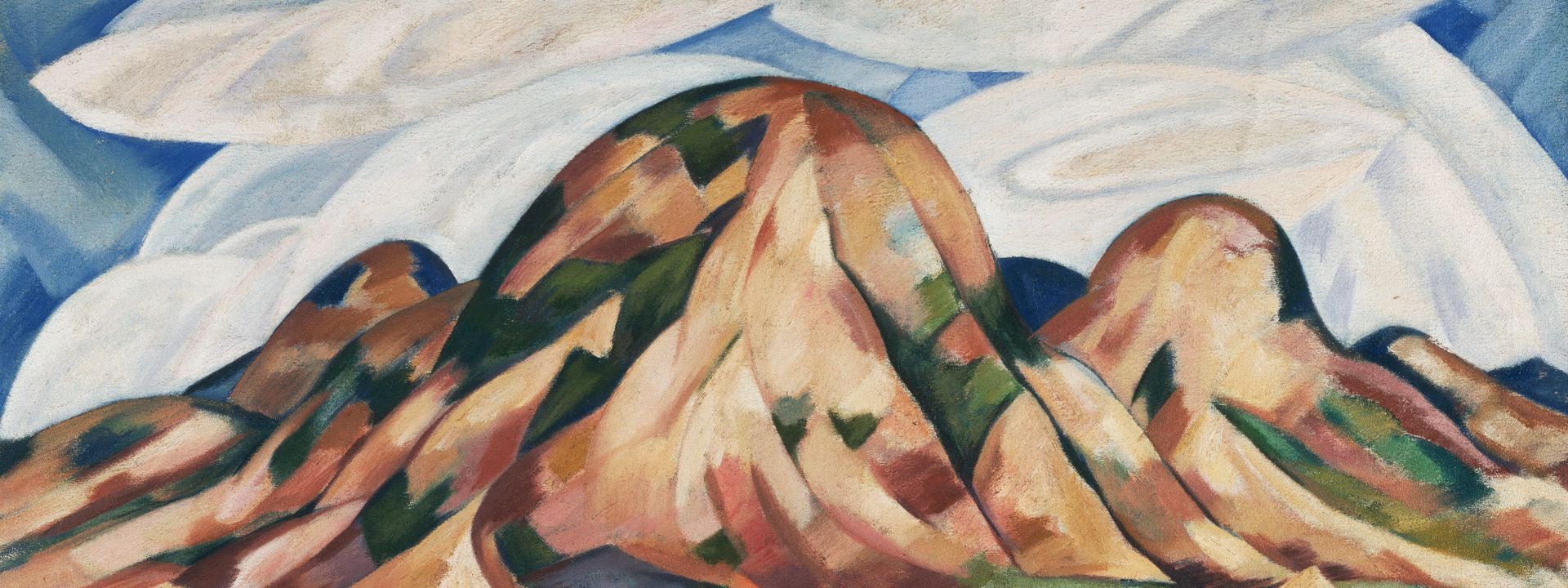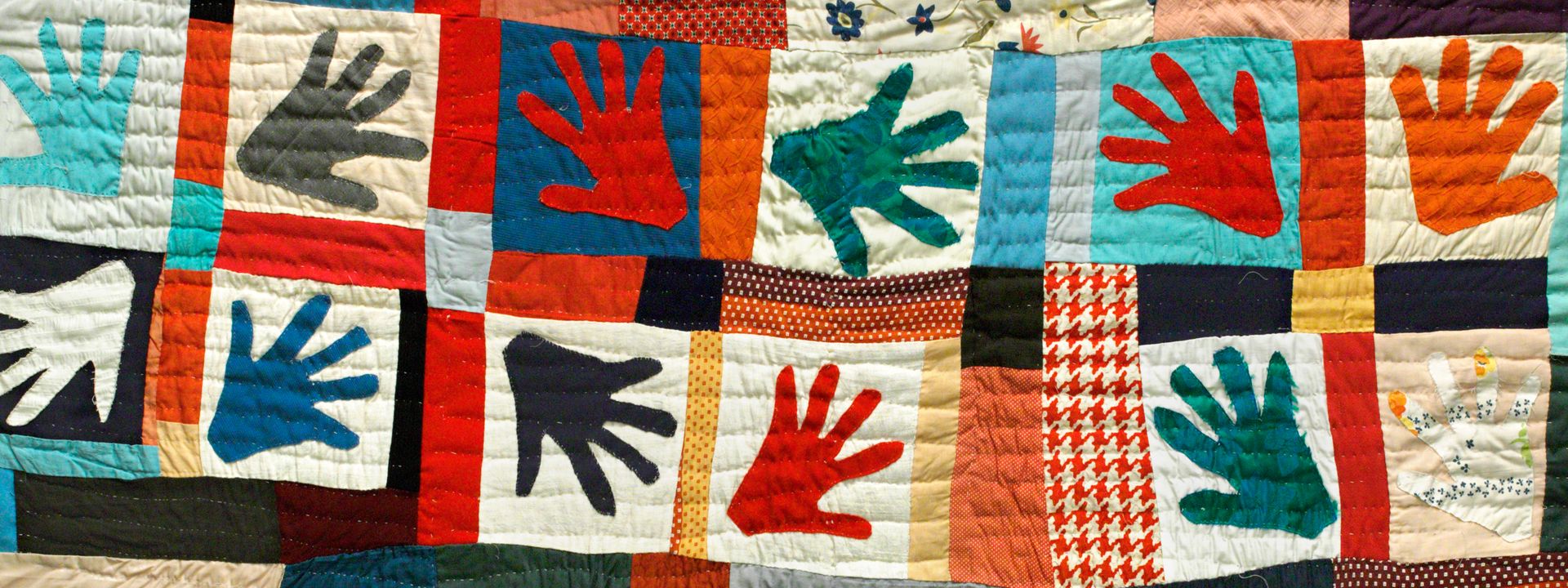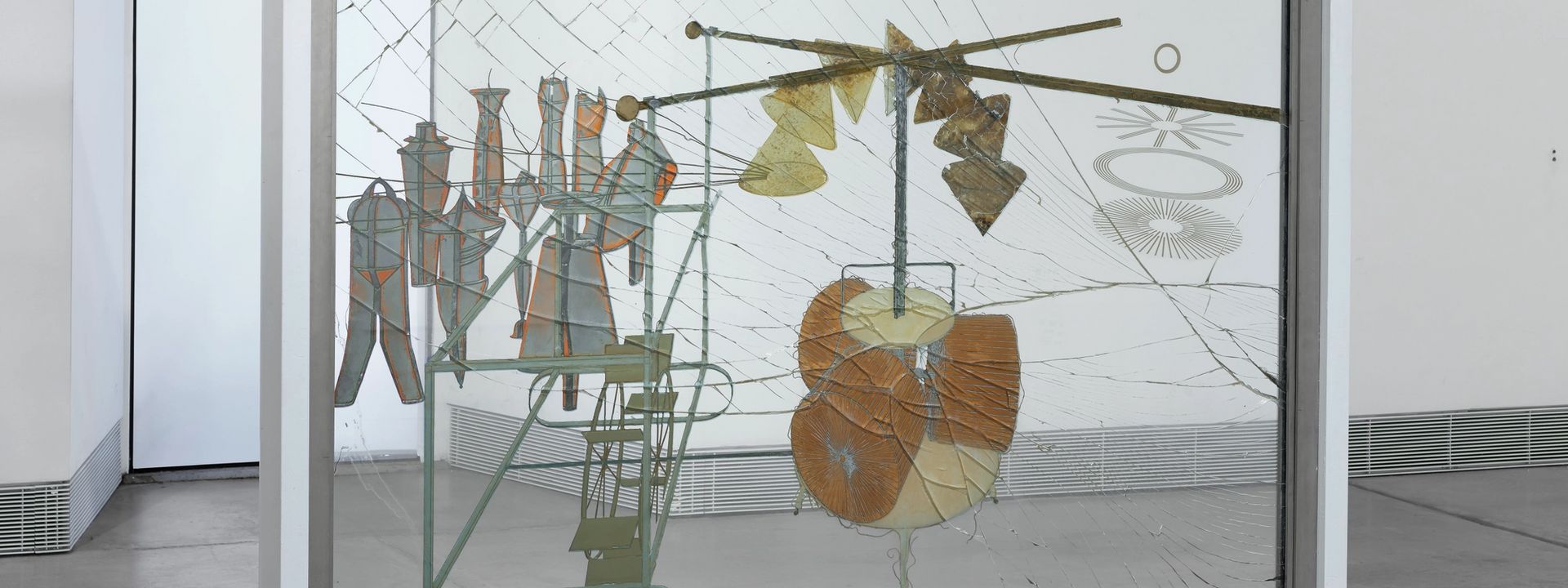Enhance the classroom learning experience with the magic of art. Our Pre-K–12 school tours, virtual lessons, and interactive education programs promote curiosity and creativity.
Questions? Email SchoolPrograms@philamuseum.org
Enhance the classroom learning experience with the magic of art. Our Pre-K–12 school tours, virtual lessons, and interactive education programs promote curiosity and creativity.
Questions? Email SchoolPrograms@philamuseum.org

We are no longer accepting K – 12 school tour requests for the 2023 – 2024 school year. Please come back after September 1, 2024 for updates.
The museum welcomes school-age learners throughout the year to discover the wonders of the exhibitions and collection, with educators providing tours designed to serve as interactive lessons for K–12 students. During these tours, students are encouraged to closely examine objects, ask questions, and participate in activities that ignite their curiosity and appreciation for art.

This program is geared especially for preschool groups with students ages 3–5. Children can explore art through observation, movement, and art making. By experiencing art through play, preschool students develop their independence, imagination, and curiosity. Each session revolves around a theme that includes a picture-book reading and prompts for extended art-making. After the lesson, each class will receive the selected picture book to add to the permanent collection of their school library.
Request an in-person visit preschool visit
For more information, email schoolprograms@philamuseum.org.
October - November 2022
Theme: Fabulous Foods
Book: Watermelon Seed by Greg Pizzoli
Museum Tour: Food in Art
Art Project: Sweet Still Lifes
December 2022 - January 2023
Theme: Curious Collections
Book: In a Jar by Deborah Marcero
Museum Tour: Collectors & Collections
Art Project: Miniature Collections
February - March 2023
Theme: Natural Wonders
Book: Tree by Britta Teckentrup
Museum Tour: Nature
Art Project: Cut Paper Collage
April - May 2023
Theme: Sounds All Around!
Book: Everybody in the Red Brick Building by Anne Wynter, Oge Mora
Museum Tour: Sounds in Art
Art Project: Mixed Media Paintings
June 2023
Theme: Wearable Art
Book: Julián Is a Mermaid by Jessica Love
Museum Tour: Fashion in Art
Art Project: Colorful Capes

We are no longer accepting K – 12 school tour requests for the 2023 – 2024 school year. Please come back after September 1, 2024 for updates.
The museum’s K–3 programs inspire curiosity and promote conversations through discussions, worksheets, examinations, and small group work. All student tours meet Common Core Academic and National Visual Arts standards while providing an inclusive learning environment to diverse student groups.
Limited in-person classes for school groups are being offered as the museum builds operations that have been reduced over the course of the pandemic. Please fill out an in-person school group visit request form to learn more.
These lessons are intended for younger students. Museum tours are designed as interactive lessons that encourage students to examine objects and ideas through a variety of activities, including discussions, worksheets, and small group work. Expect to visit approximately three to five galleries during your tour.
View standards alignment for school tours
Take a trip around the world with art as your guide. Students explore the art of several cultures as they journey through the museum’s period rooms and galleries. Tell us the country you are studying, and we will make sure to visit a related gallery!
View Around the World pre-visit guide
Artists often take inspiration from the people, places, and things around them. During this lesson, students explore portraits, still lifes, and landscapes while thinking about how artists express their ideas and feelings about the world around them.
View People, Places, and Things pre-visit guide
How can we learn to see more when we look at art? This lesson leads students to become better observers of art through looking, describing, imagining, and responding. Drawing and writing activities are adapted for students’ grade levels.
View Learning to Look pre-visit guide
Sometimes when art speaks, you want to talk back. Students join the conversation and discover a wealth of stories art can tell as they explore paintings, decorative arts, and sculptures through a variety of structured looking, writing, and role-playing activities.

We are no longer accepting K – 12 school tour requests for the 2023 – 2024 school year. Please come back after September 1, 2024 for updates.
Our Grades 4–12 tours provide enriching educational experiences for inquisitive art explorers. Observation, critical thinking, problem solving, and literacy skills are all seamlessly incorporated into each lesson. These one-and-a-half-hour programs are conducted in the museum’s permanent galleries. Expect to visit four to six galleries during your visit.
All tours are appropriate for grades 4–12 (except where noted). View standards alignment for school tours
Please view our pre-visit guide to prepare for your visit.
For more information, please email schoolprograms@philamuseum.org.
These lessons are ideal for a first visit or for a general introduction to broad aspects of the collection.
How can we learn to see more when we look at art? This lesson leads students to become better observers of both art and the world around them through looking, describing, imagining, and responding. Drawing and writing activities are adapted for students’ grade levels.
View Learning to Look pre-visit guide
What can art tell us about different times and cultures? Students compare works of art and architecture to discover the common threads and unique qualities of a variety of cultures. Grades 4–6 will complete their own around-the-world travelogue.
View the Around the World pre-visit guide
Exploring works of art naturally engages inquiring minds and encourages critical thinking. In this lesson, students deepen their understanding of art through close looking, analyzing visual evidence, making inferences, and examining different perspectives.
View Art Investigation pre-visit guide
Explore the history of the United States through works of art that tell untold stories from American history. Students will develop their historical thinking skills and analyze objects that represent multiple perspectives. This lesson approaches the study of our past through an open-minded lens.
Beginning with the museum building, students explore how artists have interpreted the ideas and mythology of the classical world.
What can the architecture, sculpture, textiles, and armor of medieval Europe tell us about life in the Middle Ages? This lesson explores stylistic changes in medieval art and how they demonstrate an evolving society.
How did art of the Renaissance reflect ideas of that time? Students examine art from Italy and northern Europe to learn more about the art and beliefs of the day.
This offering combines two lessons, Medieval Art and Art of the Renaissance, and is designed for classes studying both periods of European history.
This lesson provides a chronological look at European artistic styles from the Renaissance to today. Students are encouraged to consider the strengths and challenges of each period, and evaluate their reactions to each style.
View Renaissance to Modern pre-visit guide
What made the art of the Impressionists so different? This lesson introduces students to work by notable nineteenth-century artists and may include Monet, Degas, Cassatt, Renoir, Cézanne, van Gogh, and others, and places them within the context of their time.
View The Impressionist Era pre-visit guide
What is modern art and what makes it look the way it does? This lesson explores changing styles and ideas in European and American art, from Impressionism to Cubism to the art of today.
View Modern and Contemporary Art pre-visit guide
Students examine and compare the art of several Asian countries, including China, Korea, and Japan, among others. Classes can take a general tour of Asian art or focus on a specific country.
Students studying French or Spanish learn about that culture’s art. Tours range from medieval religious objects to contemporary paintings and sculptures.
How is being an artist like being a scientist or a mathematician? In this lesson, students practice core STEAM skills, learning how artists create innovative solutions to complex problems by directly studying objects in the collection.
View STEAM at the Museum pre-visit guide
During this lesson, students uncover the stories that works of art tell by learning more about the techniques that writers and artists use to make works engaging. Activities encourage careful observation, analysis, and discussion, and include creative, persuasive, and descriptive writing and poetry. This lesson can be adapted for students learning English.
View Art and Language Arts pre-visit guide
This tour is specifically designed to help students in Grade 4 practice literacy skills while exploring art at the museum and in the classroom. During this lesson, students use a variety of language arts skills (such as comparing, describing, interpreting, and expressing opinions) as they share their observations and ideas about works of art. Before visiting, teachers can opt to have a museum educator visit their classroom virtually to introduce students to Art Speaks and to the museum.
Each class receives:
Thanks to generous funding, Art Speaks Museum admission and busing are free this school year.
Art Speaks is made possible by William Randolph Hearst Foundation. Support for the museum’s School and Teacher Programs that serve all K through 12 students and educators is provided by The Anne M. and Philip H. Glatfelter, III Family Foundation, Dolfinger-McMahon Foundation, The Pincus Family Foundation, and TD Charitable Foundation.
This lesson will explore women as artists and women as subjects. By analyzing works of art, students will learn about the changing roles and perspectives of women in society.
During this lesson, students look at works of art from several time periods and places, and explore ways that artists have been inspired by, recorded, and incorporated elements of the natural world in their art. Students will also have a chance to respond to nature through writing and drawing activities.
What does art reflect about the time in which it was created? Students examine how artists have chronicled, commented on, and critiqued their societies.
Art can be a window into an artist’s experiences, relationships, and history. Students will investigate how artists explore ideas about identity and use art as a prompt to reflect on their own sense of self.

The museum offers a program for homeschool students on the third Thursday of every month from January through June. Each month, the 90 minute lesson will focus on a different theme. Students will explore the museum’s galleries and make art in the studio.
For more information, email schoolprograms@philamuseum.org.

We are no longer accepting K – 12 school tour requests for the 2023 – 2024 school year. Please come back after September 1, 2024 for updates.
The museum offers virtual lessons for grades Pre-K–12 and college students. Educators can bring their virtual lessons to life with art from the museum’s collection through observation exercises, guided discussions, and interactive activities. Virtual lessons are facilitated via videoconferencing platforms.
Enjoy a virtual classroom visit with just as much fun! Participating classes receive preparatory materials such as related lesson plans and classroom activities as well as a copy of the picture book. Class size is limited to 20 students and runs for 30 minutes on Wednesday mornings. Groups with more than 20 students must register for two virtual lessons, which can be taught on the same day. Teachers must be present during virtual lessons.
Pre-K: 30 minutes
| Philadelphia School District Preschools | Free |
| All other schools | $100 |
Theme options are provided upon booking.
We are no longer accepting K - 12 school tour requests for the 2023 - 2024 school year. Please come back after September 1, 2024 for updates.
Engage your students with dynamic lessons specifically designed for grades K–12.
Grades K–3: 30–45 minutes
Grades 4–12: 45–60 minutes
| Philadelphia Public and Charter Schools | Free |
| All other schools | $150 |
How can we learn to see more when we look at art? This lesson leads students to become better observers of both art and the world around them through looking, describing, imagining, and responding. Students compare works of art and architecture to discover the common threads and unique qualities of a variety of cultures.
During this lesson, students uncover the “stories” told by works of art as they experiment with the different tools that writers and artists use to make an engaging work. Activities encourage careful observation, analysis, and discussion, and include creative, persuasive, and descriptive writing and poetry. This lesson can be adapted for English-language learners.
Art Speaks is designed to help students in Grade 4 in the School District of Philadelphia practice literacy skills while exploring artworks from the museum’s collection. Students take part in a variety of lively discussions and writing and drawing activities that foster slow looking and encourage them to use a variety of language-arts skills such as comparing, describing, interpreting, and expressing opinions. Teachers can extend the lesson with the Art Speaks online teaching resource.
Explore how Black artists, past and present, depict ideas integral to forge complex identities, challenge racism, and shape vibrant cultures in the United States and around the world. Students use inquiry and discussion to consider the perspectives of artists and reflect on various ways in which art can be a tool for social change.
Art can be a window onto an artist’s experiences, relationships, and history. Students will investigate how artists explore ideas about identity and use art as a prompt to reflect on their own sense of self.
The stories and characters of Greek and Roman mythology have fascinated artists from many different eras, just as they captivate kids today. In this lesson, students explore how artists have interpreted those ancient stories at different moments in time to express ideas, convey emotion, or relate them to current events.
How can we learn to see more when we look at art? This lesson leads students to become better observers of both art and the world around them through looking, describing, imagining, and responding. Drawing and writing activities are adapted for students’ grade levels.
What is modern and contemporary art? What inspires artists to break with tradition and experiment with new ideas? How do artists respond to the world in which they live? These questions and others provide the basis for our exploration of the art of today and the recent past. This lesson encourages students to explore the diversity of modern and contemporary art through a number of different themes, such as current events, identity, the environment, social justice, and new media, among others.
Explore the history of the United States through works of art that tell untold stories from American history. Students will develop their historical thinking skills and analyze objects that represent multiple perspectives. This lesson approaches the study of our past through an antiracist lens.
Sometimes when art speaks, you want to talk back. Students join the conversation and discover a wealth of stories art can tell as they explore paintings, decorative arts, and sculptures through a variety of interactive looking, writing, and role-playing activities.
For more information, please contact The Division of Learning and Engagement by phone at 215-684-7580 or by e-mail at schoolprograms@philamuseum.org.
To make the most out of your trip to the museum, use our pre-visit activities resources, including self-touring journals, orientation guides, and printable worksheets.
Don’t forget to use your free educator’s pass to familiarize yourself with the museum prior to your class trip. To ensure an enjoyable experience for all, please review our Visitor Tips and Policies before you arrive.
Please let us know ahead of time what your class is studying and if there are any specific objects you hope to see on your visit. Though the works of art on view in the museum’s galleries change regularly, every effort will be made to include your requests.
Some additional tips to prepare your class for their visit:
Use our post-visit activities resources to help your class build upon their experience when they return to school, including worksheets and postcards.
Some fun suggestions to help your students reflect on their visit include:
Support for the museum’s School and Teacher Programs that serve all K through 12 students and educators is provided by The Anne M. and Philip H. Glatfelter, III Family Foundation, Lincoln Financial Foundation, TD Charitable Foundation, and by gifts made through Pennsylvania’s Educational Improvement Tax Credit (EITC) Program.